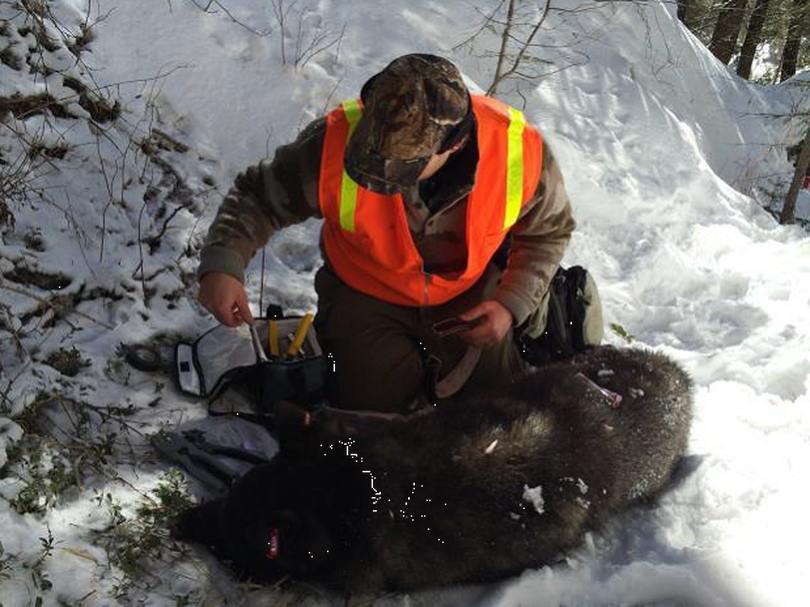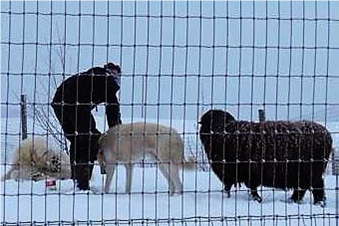State spays wild wolf after it’s bred by loose dog

ENDANGERED SPECIES -- The saga of wolf recovery in Washington has taken a strange tryst.
A large domestic guard dog that took a month-long romp on the wild side in Pend Oreille County forced Washington Fish and Wildlife officials to capture and spay an endangered female gray wolf on Saturday.

"Our goal is restoration of a native wolf population not in producing a generation of hybrids we'd have to take care of in another way later," said Donny Martorello, the department's carnivore manager in Olympia.
The wolf was one of two females in the new Ruby Creek Pack that biologists have been tracking with GPS collars since July.
The unusual action came after biologists learned that an Akbosh sheep dog climbed a 7-foot-tall fence from its yard near Ione and disappeared with the two female wolves for more than a month during February when wolves go into heat.
"If there had been a male wolf in the group, the dog would have been killed instantly," Martorello said. But the two females tolerated him and breeding occurred, he said.
Biologists easily tracked the GPS signal and used a helicopter to shoot tranquilizers and capture the wolves. One female was pregnant; the other was not, he said. Both were released in the Pend Oreille River area.
"Spaying (the pregnant wolf) was a better alternative than trying to go out and kill all the pups after they're born," he said.
The dog had run off with the wolves for about a week in early January, but biologists were able to monitor the wolves and tell the dog's owner when they were back near the home. The homeowner was able to call the dog in.
"We were already suspicious," Martorello said. "Dogs and wolves usually don't mix."
Wildlife officials advised the dog owner to restrain the dog for the rest of the winter. While dogs can come into heat throughout the year, wolves generally come into estrus only in January and February, Martorello said.
"But when those females came back in a few days, one must have been in estrus because that big, intact dog climbed a seven-foot orchard fence and took off with them from mid-January through February," he said.
- Maybe this is the start of the new, more gentle guard dog: Keep the big bad wolves away from the sheep with a little love.
